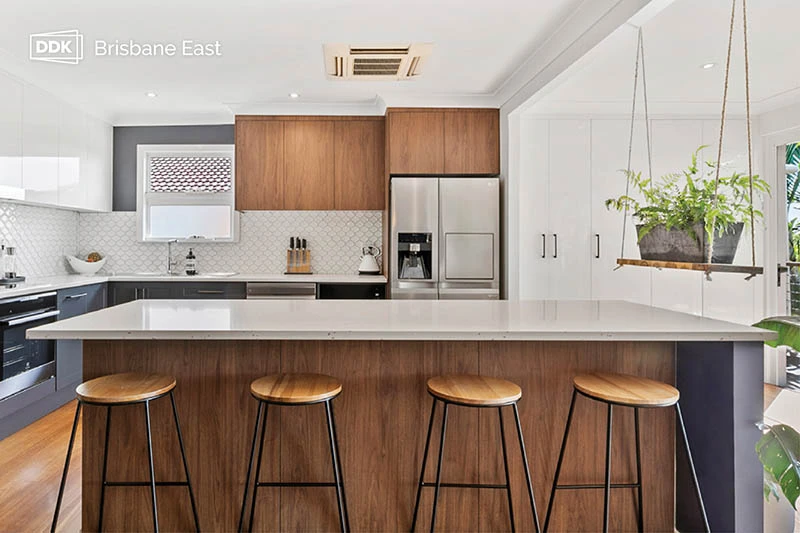The world we live in today is more environmentally conscious than the one a decade ago. People are seeking ways to be more eco-friendly in their day-to-day lives, whether it be something as simple as reusable straws or making an effort to recycle. This value shift has even influenced people’s buying decisions and been the driving force behind a lot of trends across a number of industries.
In the renovation space, we are seeing a desire for more sustainability both in the design and execution of home upgrades. Historically, the kitchen has been one of the biggest drains on resources in the home, so finding ways to design and develop eco kitchens can provide great benefits to the environment. It can even go beyond that and bring advantages to you as a home owner. Let’s investigate this further.
The benefits of a sustainable kitchen
Cost savings
Part of being sustainable involves greater efficiency with energy and water. As well as the obvious benefits this has on the environment, implementing a sustainable kitchen design can also ease the strain on your finances. With lower utility bills you can reduce your long-term expenses and save money more easily.
Increased home value
As we stated above, a desire to be more environmentally-minded is powering people’s buying decisions. If your kitchen is set up to be more eco-friendly, it can act as a selling point for potential buyers and even increase the market value of your home.
An investment in the future
Creating a sustainable kitchen offers long-term benefits to both the environment and the homeowner. With reduced energy usage and less waste production, you can better protect the environment and the community for years to come, contributing to a greener future. Likewise, you can improve your own health with better air quality and less chemical exposure.
How to create a sustainable kitchen
1. Use sustainable materials
When it comes to sustainable kitchen renovation, you need to start by using the right materials. This could be bamboo, cork, natural stone, or anything made from recycled/recyclable content like stainless steel or bronze. Using sustainable cabinets, benchtops, sinks and any other kitchen elements is important since it can help reduce the depletion of resources, waste, and chemical use.
2. Use the right appliances
Energy-efficient technology is more advanced than ever, allowing users to reduce energy consumption and their carbon footprint with eco-friendly kitchen products. There are smart appliances like fridges and dishwashers that will adjust their usage automatically based on your pre-existing habits, and you can use gadgets like a boiling water tap. These are more sustainable when heating smaller amounts of water since they heats what you need on demand without using as much energy as an electric kettle. It’s also a good idea to cook with gas as this is a more sustainable energy source with lower emissions. In terms of water use, you can install water-saving appliances and low-flow faucets that minimise water wastage.
3. Consider your lighting options
Speaking of energy efficiency, the right lighting can go a long way. LED lights are known to be better energy users with a longer lifespan than normal blubs. Of course, that’s not the only thing you can do. By creating a detailed plan for your lighting scheme, you can minimise the need for artificial lighting and instead rely on natural light from windows, skylights, and even light-coloured materials.
Make note of the areas that receive natural light and optimise them in your new kitchen layout. You can use a roof light to provide daylight to prep areas, or a sliding door to illuminate dining spaces. Plus, with bright kitchen surfaces, the light can reflect off them better and maximise coverage of the natural light. This is also great for your health since you can soak up some vitamin D and enjoy fresh air from open windows.
4. Reduce wasted materials
The actual construction of a kitchen is an important stage for sustainable practices. Overhauling everything and keeping nothing of your original structure creates a lot of unnecessary waste that ultimately needs replacing anyway. For a more sustainable kitchen renovation, you should use as much of your existing kitchen as possible and only update the key areas that need it. This could involve maintaining your cabinet layout and simply updating the door and drawer fronts, or swapping out your benchtops with sustainable materials. Of course, the goal of waste reduction should carry through to your day-to-day once the kitchen is in use, so install a composting system and be sure to recycle.
5. Source locally
To create your sustainable kitchen, you should aim to support local businesses. This can reduce transport emissions since there’s no need to ship materials from far away, and waste can be minimised without having to securely package the requested items.
How DDK practices sustainable kitchen renovation
As an environmentally conscious business, DDK is always seeking to be more sustainable. Our kitchen facelifts maintain your existing kitchen structure and allow you to upgrade key elements like door and drawer fronts, splashbacks, benchtops, and tapware. Plus, a lot of our products are custom-made by local manufacturers, reducing our carbon footprint, and yours by extension.
So, if you’re ready to get started on your sustainable kitchen, we’re ready to help. Talk to us today.

